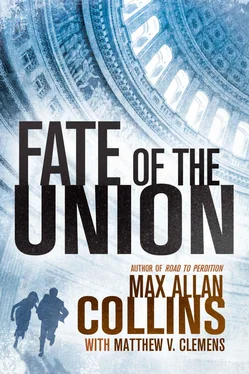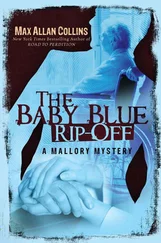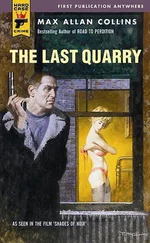“I was beginning to think you weren’t coming,” he said.
Reeder said nothing.
The blond, looking at the pistol trained on him, withdrew his hand from his jacket pocket. So that Reeder could see the cell phone detonator.
“Let’s not get overly excited, Joe. Okay I call you Joe? I feel like we know each other now. We’ve been through a lot together, haven’t we?” He gestured casually with the phone-in-hand.
“You want to talk?”
“Why not? We understand each other, don’t we? Who knows, maybe you can reason with me.”
Reeder shot him in the head.
“Not interested,” he said, but the blond didn’t hear him.
Reeder plucked the cell phone from dead fingers as the assassin crumpled empty-eyed toward the cement, scarlet trickling from the black hole in his forehead to drip down over his nose. A crimson mist sparkled in the air like dying fireworks.
Rogers’s voice came on the comms system, distant in his ringing ears. “ That was a shot! Everyone report.”
Reeder said, “Clear. Blond is down and dead. I have the cell phone. Tell Fisk to get the bomb squad over to the Capitol.”
“You’re okay?” Rogers asked, out of breath, on the run.
“Sure,” he said.
Rogers found him sitting on the sidewalk, back to the wall, ten or so feet from the fallen assassin. He was crying. She went down and checked on the dead man, came back quickly.
Kneeling before him, she said, “You are okay?”
“Amy’s okay,” he said, and swallowed, smiling, still crying. “That’s what matters. She’s okay.”
“To argue with a person who has renounced the use of reason is like administering medicine to the dead.”
Thomas Paine
Patti Rogers sat in first class next to Joe Reeder, who had paid for both their airfares. She was taking a personal day to fly with Joe to Toledo, Ohio, for reasons that remained somewhat obscure. They were on their way to talk to Adam Benjamin. That was all she knew.
She had asked only one question: “What is this about?”
“When we get there,” he said, “just follow my lead.”
She knew Reeder well enough to know that was the end of that discussion.
The immediate aftermath of Reeder taking down the blond assassin had been a media blackout as the federal government — by way of the Bureau, Homeland, NSA, and even the CIA — undertook a massive cover-up in the name of national security. Reeder appeared mildly outraged, but Rogers understood — public panic might ensue should it become known how close the nation had come to having every leader of its two parties killed, and the great symbol of the democracy — the Capitol Building itself — destroyed.
Beyond that was the issue of Senkstone, a weapon of such frightening proportions that the ramifications of any wide knowledge of its existence could hardly be calculated. Reeder said that the Pentagon was no doubt trying to get its “grubby hands” on the stuff: “They must be giddy finding a new way to kill people, with no consideration of how any enemy might use it against us.”
One thing could not be covered up: at the same time the blond was supposed to be blowing up the Capitol, three men thought to be the dead man’s comrades-in-arms assassinated Secretary of Agriculture Alexander Clarkson at a supposed safe house in Arlington, taking out a team of four Secret Service agents, including two Reeder had worked with.
As the pundits speculated on the reason for such an obscure assassination — absent the context of the greater plot — Reeder said, “Makes perfect sense. The idea was to remove the government, and that meant taking out the remaining man in presidential succession, too.”
Over the past two weeks, the task force had remained in place, putting the pieces together but very glad those pieces weren’t of a destroyed Capitol Building. Through the efforts of every team member — but of course especially Miggie — it had all come together.
First, pictures of DeShawn Davis, aka Karma Sabich, had been found on Frank Elmore’s laptop.
Next, a subsidiary of Barmore Holdings proved to have paid off the Constitution Hall shooter, Thomas Stanton, by way of the Cayman Island trust funds for Stanton’s children.
Meanwhile, the hacker monitoring Miggie’s computer turned out to be a tech support woman just two floors down who’d been a Common Sense Movement true believer — in custody now.
And finally came the dropped shoe everybody had been waiting for — the identification of the blond assassin.
Fingerprints led to Evan Carpenter, a Michigan boy who’d done poorly in school but excelled in the military — US Army Special Forces, as the arm tattoo in the hotel video indicated.
“We might have IDed him sooner,” Miggie said to Reeder, “if he hadn’t already been dead when you killed him.”
She and Joe were pulled up at Miggie’s temporary workstation in the task force bullpen.
“Explain,” Reeder said.
“Remember that dustup with the Muslim extremists in the Philippines back in 2019? According to service records, Carpenter and his whole squad went missing in action, presumed dead — declared legally dead three years ago.”
“How many men?”
“Including Carpenter, eight.”
“And none has ever turned up?”
“Other than Carpenter, no.”
Reeder’s eyes narrowed. “I’m not so sure. Three of them may have helped him remove Chris Bryson. And the same three may be behind the killings of Secretary Clarkson and his Secret Service team.”
“They don’t have a leader now,” Rogers pointed out. “We’ll find them. Bohannon and Wade are working with the Secret Service on the investigation of Clarkson’s assassination. Anyway, I have a vested interest.”
Miggie said, “You do?”
But Reeder answered the question: “One of them took a few shots at Patti coming out of that diner — remember?”
The next day Miggie had more for them: he’d managed to track down a string of the mercenary’s aliases, one of which led to a Swiss bank account where a money trail ended at another Barmore subsidiary.
“That was the missing piece,” Reeder said. “Now we know.”
“We do?” Rogers asked.
“Unless, of course, Frank Elmore and Lynn Barr were suicidal.”
“Why suicidal?”
Reeder’s eyebrows went up. “Well, do you think they hired Carpenter to assassinate themselves?”
Later that day, Reeder had announced he was heading back to ABC Security the first of next week.
“Understood,” Rogers said. “You have a business to run.”
“And media to duck. But there’s one thing left for us to do, if you’re up for it.”
“What would that be?”
“Call on Adam Benjamin.”
Rogers drove the rental Chevy from Toledo to Defiance, where they had a two o’clock appointment with the small town’s favorite son. She had made the arrangements herself, getting through to Benjamin surprisingly fast, almost as if he expected her call. Maybe he had.
At any rate, she’d merely said the FBI wanted to speak to him, off the record; essentially this would be an unofficial visit, and she’d appreciate it if he paid her that courtesy. He had readily agreed.
Now she was driving along a quiet, snowy street in Defiance, Ohio, where Adam Benjamin lived in a two-story Prairie School — style house built around the turn of the twentieth century, the kind of home that had a lofty bearing without losing its middle-class flavor. The homes on either side, neither as imposing, were also owned by Benjamin — the 1920s bungalow to the right had been Frank Elmore’s, the 1950s crackerbox to the left was a bodyguard station.
But just driving by, the notion that America’s richest man lived here was the last thing that would occur to you.
Читать дальше












